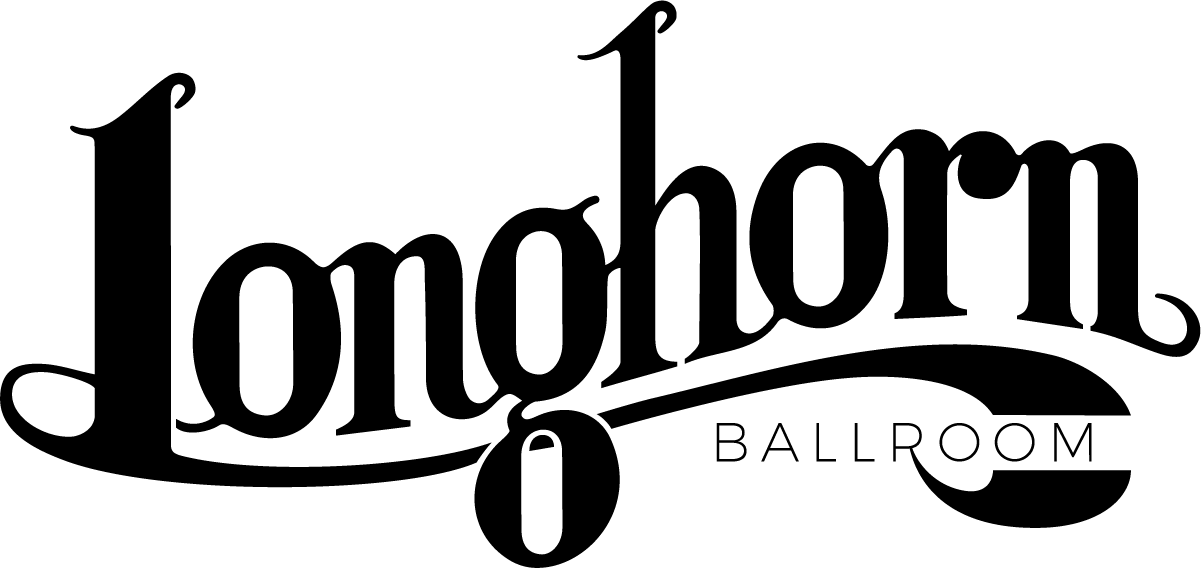Bio
The history of Texas music is long and varied, but the canon of American music more generally can be tidily summarized by the acts that have rolled through the Longhorn Ballroom over the years. The venue was widely considered one of the preeminent purveyors of 20th-century country music in the nation, thanks to its dancehall atmosphere and performances from staples of the genre like Bob Wills and the Texas Playboys, Patsy Cline, Charley Pride, George Jones, Loretta Lynn, Willie Nelson, Waylon Jennings, George Strait, and many more. The country stylings alone put it in elite company, but when the curtain is pulled back to look at the full picture, one can understand why the Longhorn Ballroom has been called Texas’ most Historic Music Venue.
Ray Charles, B.B. King, Millie Jackson, Fats Domino, Al Green, and James Brown are just a handful of the great soul and blues acts who graced the Longhorn Ballroom stage on Monday Service Industry Nights at the venue. The Rolling Stones once famously scheduled a Texas show on a Tuesday night so they could get to town early to see Bobby “Blue” Bland perform. Long before that, in 1954 to be precise, the word was out. In the racially segregated Jim Crow South, Nat King Cole captivated a sold-out Black audience who sat front row in the premium seats, while the White folks stood in the back to listen to the legend.
Of course, the Longhorn has had its fair share of scandalous performances and associates–as all legendary music halls should. The ballroom was once run by the infamous club owner turned assassin Jack Ruby, and back in ‘78, the Sex Pistols performed with Sid Vicious playing most of the set with a bloodied face given to him early in the set by an “adoring” fan. The story is less about the hostile and infamous evening than what the Longhorn Ballroom came to represent: a fiercely independent, highly curated venue that prioritized the art above all else.
This was a type of joint that unapologetically promoted Merle Haggard and the Sex Pistols on the same marquee; a place where different factions of concertgoers could unite to experience the glorious journey of live music. When the venue closed, it left a massive hole in the Texas music scene. In retrospect, it foreshadowed the dissolution of the independently owned, artist-centric venues that have since been slowly replaced by much larger operators who bring along corporate cultures. While the independent operators are down, they are far from out. Edwin Cabaniss and the Kessler Presents team are reopening the Longhorn Ballroom with a goal of bringing it back to its heyday so a new generation of artists and patrons alike can once again enjoy this Texas legend.
Cabaniss, a 5th generation Texan with an independent streak to match his home state, was a successful businessman long before he ventured into live music. Admittedly, his heart leads his direction most of the time, but when it comes to matters of business, his mind always has the last word. He asks himself a simple question, “Is there any other project we would rather be doing?,” and when that answer is ‘no,’ then his mind goes to work, analyzing all the details to make sure the project is viable. During this analysis, Cabaniss became acutely aware that for all the great history of the Longhorn Ballroom, a trail of mental breakdowns, multiple bankruptcies, and even suicide have beset former owners.
Cabaniss understands there is a mountain to climb, but does so confidently. He has this perspective because the proof is in the pudding. Over the last decade, Kessler Presents has curated events that fans and artists alike have celebrated thanks to the company’s long term, independent approach. Cabaniss explains, “Our patrons crave authenticity and the magic of discovery in unique settings. It’s been the model for our successes at the Kessler and now we will apply those same values at the Longhorn.”
As such, the ethos of Kessler Presents in regard to the Longhorn Ballroom can neatly fit into this thesis: “The restoration of the Longhorn will share the story of Texas’ musical contributions to the greater American music canon.” The mission states, “The goal is to put these stories in front of the artist, live music patrons and the music industry alike, building lore and respect with all groups. The aim is to honor and connect the venue’s history to the venue’s present and future.”





